Ash dieback identification and diagnosis: early symptoms on leaves and shoots — a month-by-month guide
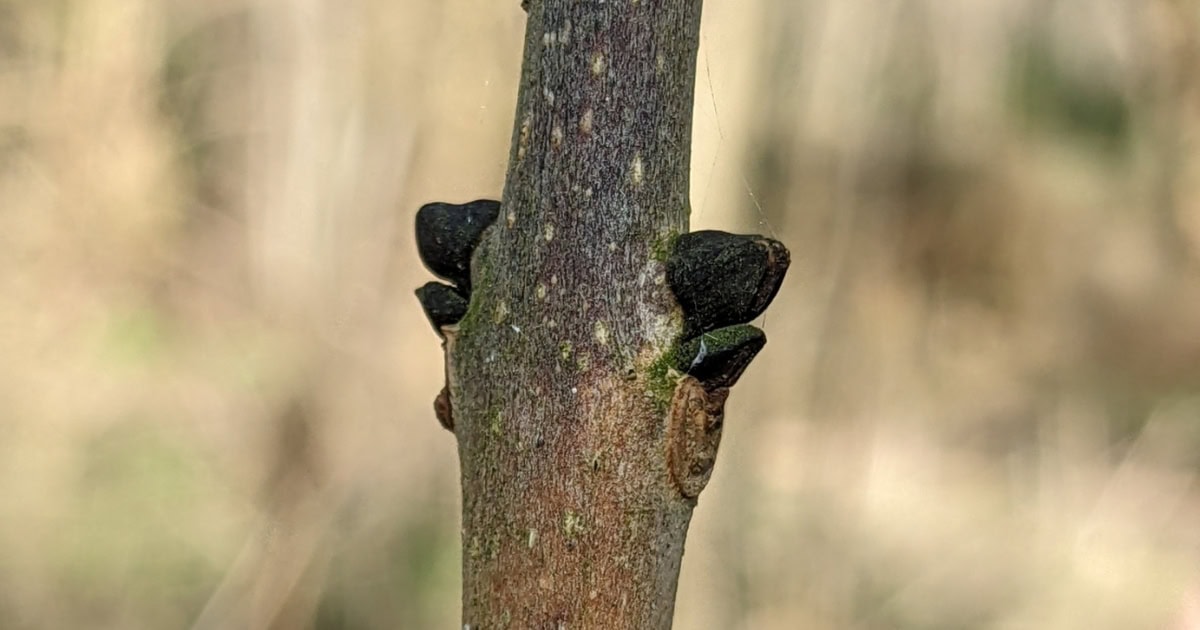
Introduction
You can catch ash dieback early if you know when and where to look. In the North West, wet summers, coastal winds and heavy clay can hide or mimic the signs. This guide shows you what to check on leaves and shoots as the year unfolds, with two practical checks you can try this week and clear next steps if the tree overhangs a lane, access track or public right of way.
Definition
Ash dieback is a fungal disease of ash caused by Hymenoscyphus fraxineus. It infects through the leaves in spring and summer, blackens leaflets and shoots in mid to late summer, and often leaves diamond-shaped lesions at the points where last year’s shoots meet the stem. Some trees decline; a few show tolerance. (Forest Research; Royal Horticultural Society). Forest ResearchRHS
Ash dieback symptoms — what does it look like?
Leaves and soft shoots
On affected shoots the youngest leaflets lose firmness and hang. Brown to black patches track along the leaflet midrib, sometimes starting at the base. Whole leaflets can collapse and cling on. In the North West, the clearest leaf and shoot signs usually appear from July to September and are less reliable earlier in the year. (Forest Research; Woodland Trust; Royal Horticultural Society). Forest ResearchWoodland TrustRHS
Lesions at nodes
Where last year’s side shoots join the stem, look for sunken, lens- or diamond-shaped lesions with uneven margins. If you carefully pry a tiny flap of bark beside a lesion, the wood beneath is often grey-brown rather than the creamy colour of healthy sapwood. Lesions can girdle the shoot and kill the tip. (Royal Horticultural Society; Cornwall Council). RHScornwall.gov.uk
Epicormic growth and crown change
As tips die back, trees often push new shoots lower down the stem. The outer crown looks threadbare, especially at the margins. (Woodland Trust). Woodland Trust
Ash dieback lookalike: anthracnose, frost and wind scorch
In late spring after a wet spell, anthracnose can mark leaves along the veins and cause early drop; symptoms often ease by high summer. Frost and salt-laden winds can crisp edges, but they rarely produce diamond-shaped stem lesions at last year’s nodes. Use timing and the presence of stem lesions to separate these from ash dieback. (Royal Horticultural Society; local authority guidance). RHScornwall.gov.uk
Practical line: If you see blackened, hanging leaflets and diamond lesions at nodes between July and September, book a survey over areas where people or vehicles pass.
Month-by-month diagnosis for North West conditions
We work across Lancashire, Greater Manchester, Merseyside, Cheshire and Cumbria. The months below reflect research on infection and symptom timing, with local notes for coastal exposure, sheltered river corridors and clay-soiled hollows. (Forest Research; Hietala and colleagues, Frontiers in Plant Science; Downie, Public Library of Science Pathogens). Forest ResearchFrontiersPMC
April — budbreak watch
Ash is naturally late to leaf. Do not mistake lateness for disease. On early shoots, examine the midrib closely: are there narrow brown tracks that widen over a few days? True ash dieback signs are uncommon now; cold nights can darken young tissue overnight.
Action: Take two photos of the same shoots on the north and south sides. These will anchor your summer comparisons.
May — first hints on the midrib
As temperatures rise, the first infections may show as pinpoint brown lesions along the leaflet midrib, especially after wet spells on sheltered, humid sites such as river corridors and clay hollows. If irregular blotches follow a cold snap and then improve by June, consider anthracnose rather than ash dieback. (Downie; Royal Horticultural Society). PMCRHS
Action: Tag three to five shoots with biodegradable tape so you can re-check the same points in July.
June — tip wilt on new shoots
Walk the outer crown lines along farm tracks and lanes. Wilting leaflets at the very tips of soft shoots, with darkening that follows the midrib back toward the node, are early red flags. On coastal belts such as the Wirral and the Fylde, wind-burn singes edges but does not follow the midrib or create diamond lesions.
Action: Gently flex suspect shoots; if the tip is brittle and a shallow scrape shows grey-brown under bark, note the location.
July — prime month for leaf and shoot symptoms
This is the best month for diagnosis in foliage. Expect blackened, hanging leaflets; fresh soft shoots that flag and die; and those sunken diamond lesions at last year’s nodes, especially on lower inner branches where humidity lingers. Research shows spore pressure is high by mid-July. (Forest Research; Hietala and colleagues). Forest ResearchFrontiers
Action: If the tree stands over a public right of way or roadside verge, book a survey and start thinking about access and, if needed, traffic management.
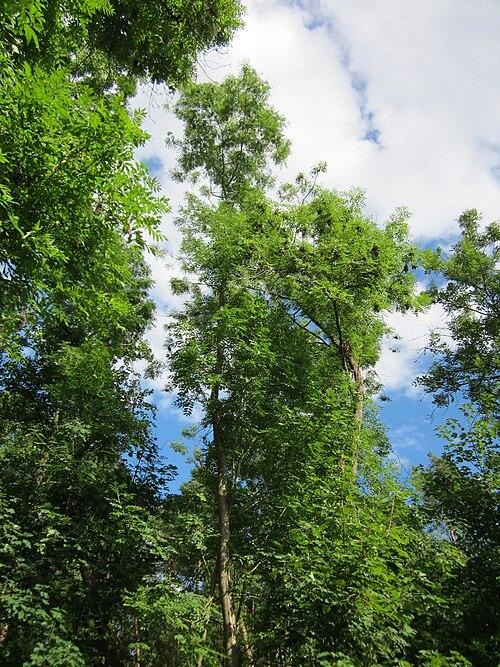
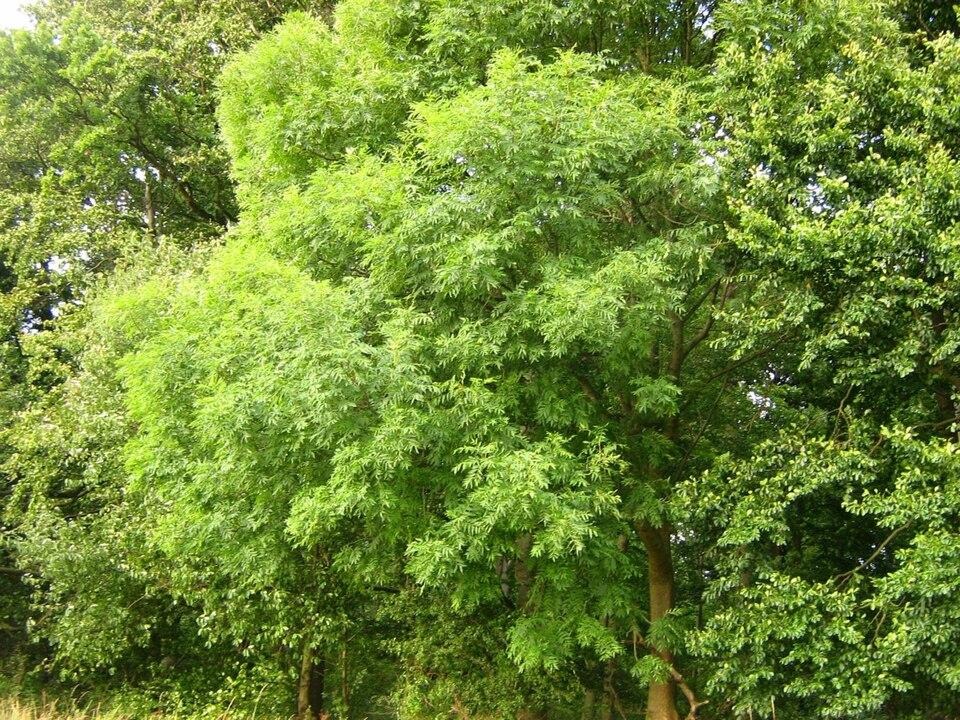
August — lesions declare themselves
Lesions lengthen and their margins look uneven. A scrape beneath often reveals grey-brown staining that extends beyond the bark. The outer crown can look thin, while stress triggers little tufts of new shoots lower on the trunk. (Royal Horticultural Society). RHS
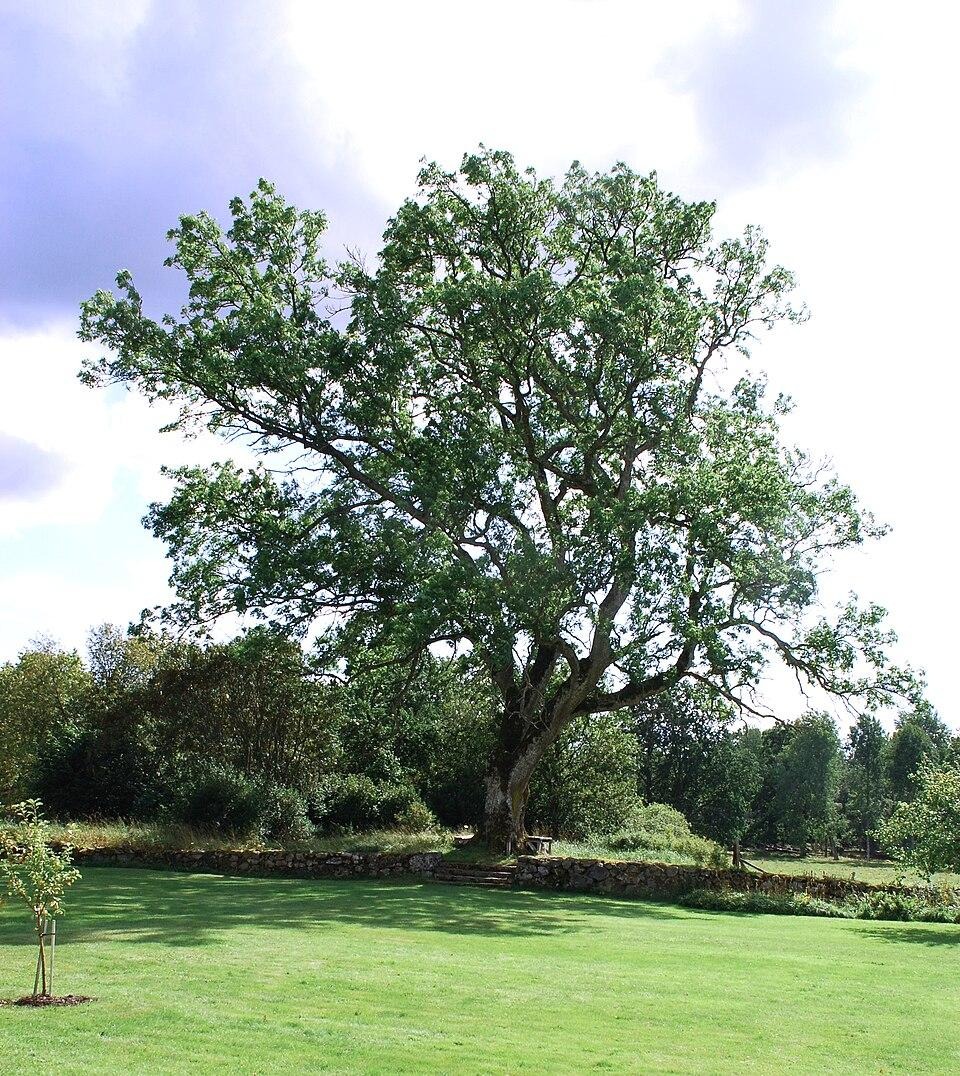
Action: Mark any branches with more than half of the recent tips dead for a priority inspection.
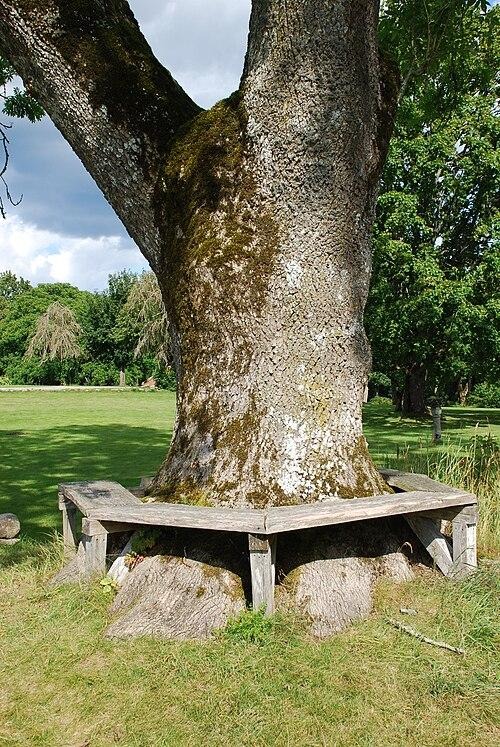
September — early shed and contrast
You will notice ash that browns and sheds early while nearby trees stay green. Retained blackened leaflets hanging beside fresh foliage are telling. As autumn colour spreads, rely more on lesions and dead tips than colour alone. (Forest Research). Forest Research
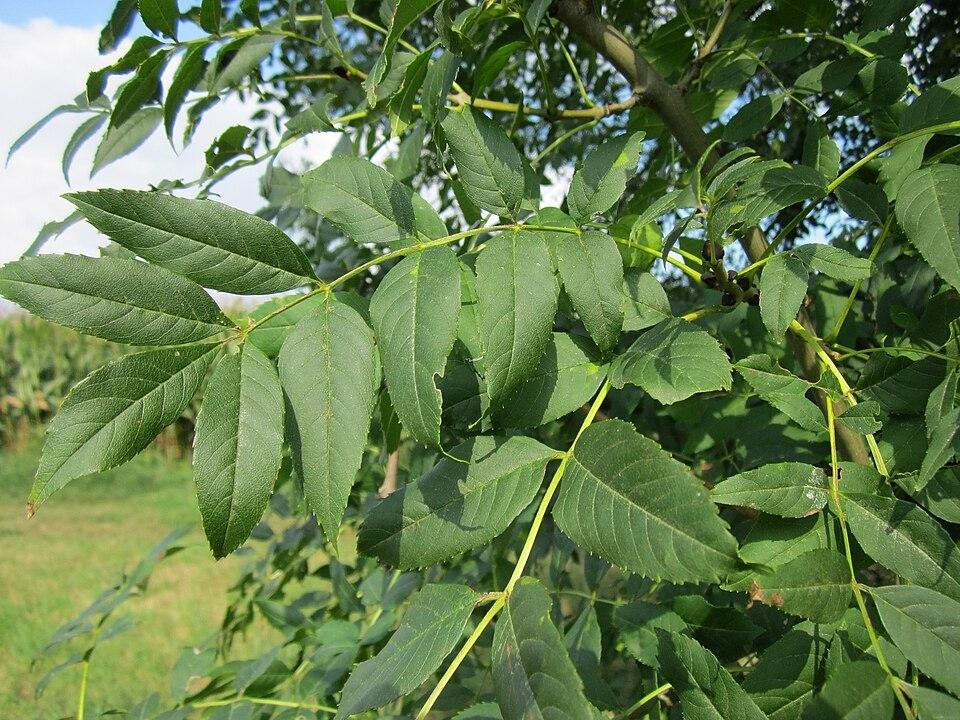
Action: If this is above a play area, farmyard, caravan pitch or car park, book a survey.
October and winter — confirm on wood
Leaves fall, which makes it easier to trace dead twigs back to lesions. Winter is ideal for mapping how far tip dieback has progressed and planning work around Tree Preservation Orders and bird seasons. The fungus overwinters on fallen leaf stalks and produces small cup-shaped fruiting bodies the following early summer. (Downie; Forest Research). PMCForest Research
Lesion extending into wood, with necrosis around a side shoot — September 2012.
Licence: Open Government Licence v1.0.
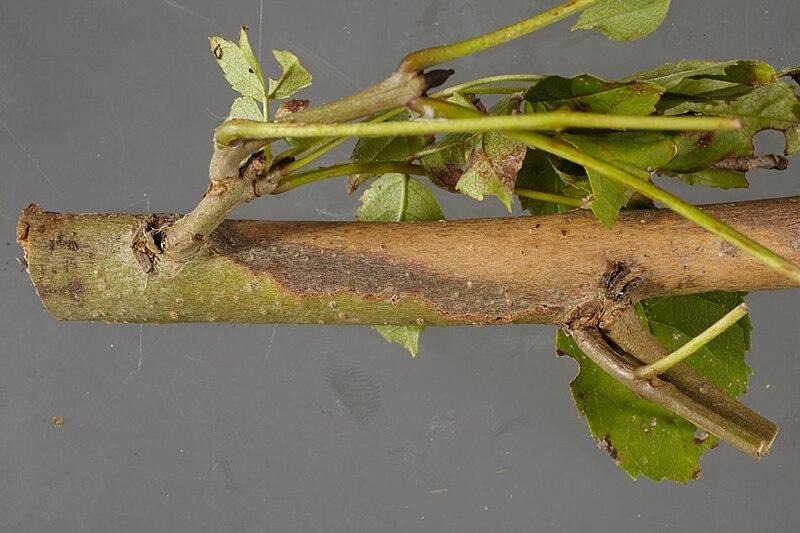
Action: Rake leaf stalks only where safe and practical, prioritising paths and tracks. Retain deadwood away from targets to support habitat where it is safe to do so. (Forestry Commission guidance). GOV.UK
Two checks you can try this week
Photo comparison test
Stand in the same spot and replicate last summer’s photos in July or August. Compare the same branch tips year-on-year for widening tip dieback and earlier browning.
Node-lesion check
Choose three second-order shoots. At last year’s nodes, look for sunken, diamond-shaped lesions. If you find them on more than one shoot—especially above paths—book a professional inspection.
Practical line: If these checks worry you, arrange a visit before the next school holiday or harvest window when traffic on tracks increases.
Case notes from recent work
Farm track near Garstang
In August we noted blackened, retained leaflets on roadside ash while the hedgerow ash behind stayed green. Diamond lesions at two nodes on multiple shoots confirmed ash dieback rather than wind-burn. Access was tight, the clay surface was soft after rain, and the track served cattle and tractors. We agreed a late-summer window to avoid the worst ground damage and to keep stock movements safe.
Outer Chorley, roadside belt above a public right of way
Four mature ash formed a narrow roadside line above a footpath. Outer crowns showed more than half of the tips dead, and diamond lesions were widespread on lower secondaries. We advised phased removal of two higher-risk trees under felling licence guidance, and we retained one apparently tolerant tree set back from the carriageway for monitoring. Works were timed for off-peak traffic and a short diversion of the footpath. (Forestry Commission guidance on management). GOV.UK
Practical line: If your ash stands on a verge or beside a path, assess it with a target-led approach first, then plan works.
Safety and legal basics for owners
- Felling licence. You often need a felling licence to remove trees. There are exceptions, but begin from the point of checking. Unlicensed felling can lead to prosecution. (United Kingdom government guidance). GOV.UKdata.gov.uk
- Tree Preservation Orders and Conservation Areas. Protected trees generally require consent. Works on dead or dangerous parts can be exempt, but you must be able to prove that the exemption applies. Speak with your local planning authority before you act. (Planning Portal; government guidance). Planning PortalGOV.UK
- Roads and public rights of way. Owners are responsible for trees on their land, including those next to roads and footpaths. Where danger is identified, action may be required. (Forestry Commission overview; local authority practice). GOV.UKLambeth Council
- Retain where safe. Current advice supports retaining healthier-looking ash where it is safe to do so, to preserve potential tolerance and biodiversity. (Forestry Commission; Tree Council). GOV.UKThe Tree Council
Practical line: If the tree could hit a road, track, yard or play area, commission a formal survey and check the consent and licensing position before works.
Monitor, prune or remove? A clear look at the options
Monitor
Advantages: Keeps potentially tolerant genetics in the landscape; supports habitat; spreads cost over time.
Disadvantages: Requires regular inspections; risk needs active management near targets. (Forestry Commission). GOV.UK
Prune or remove
Advantages: Immediate risk reduction along roads, public rights of way and play areas; clearer liability position.
Disadvantages: Consent and licensing steps; direct cost; loss of canopy and habitat unless mitigated through replanting. (Forestry Commission; Tree Council). GOV.UKThe Tree Council
Practical line: Where targets are present and lesions are widespread, do not delay decisions.
Summary
- The most reliable window to spot leaf and shoot symptoms is July to September. (Forest Research). Forest Research
- Look for blackened, hanging leaflets and diamond-shaped lesions at last year’s nodes. (Royal Horticultural Society). RHS
- Separate lookalikes by timing and the presence of node lesions.
- Near roads and public rights of way, manage risk first and check licensing and Tree Preservation Order rules before any works. (Planning Portal; Forestry Commission). Planning PortalGOV.UK
Book an ash inspection across the North West
Need a calm, expert view? We inspect ash across Lancashire, Greater Manchester, Merseyside, Cheshire and Cumbria. If your tree overhangs a lane, access track or public right of way, book an ash dieback check and we will map the risks, confirm identification and set out a simple plan for the next twelve months.
References and further reading
- Forest Research. “Ash dieback (Hymenoscyphus fraxineus).” Accessed September 2025. Key guidance on identification and survey timing. Forest Research
- Forestry Commission (United Kingdom government). “Managing ash dieback in England.” Last updated January 2025. Management approach, responsibilities and safety. GOV.UK
- Royal Horticultural Society. “Ash dieback.” Detailed symptoms on leaves, shoots and lesions. RHS
- Woodland Trust. “Ash dieback.” Symptom overview with images. Woodland Trust
- Downie, John A. “Ash dieback epidemic in Europe: how can molecular epidemiology help?” Public Library of Science Pathogens, 2017. Lifecycle and overwintering on fallen leaf stalks. PMC
- Hietala, Anne M., and colleagues. “Propagule pressure build-up by the invasive ash dieback pathogen Hymenoscyphus fraxineus.” Frontiers in Plant Science, 2018. Seasonal spore release and infection pressure in summer. Frontiers
- Planning Portal. “Works to Trees — consent types.” Tree Preservation Order exemptions and proof requirements. Planning Portal
Short disclaimer for England
This article provides general identification and safety guidance for private owners in England. Tree work can require a felling licence and consent where a Tree Preservation Order or Conservation Area applies. Dangerous tree exemptions are narrow; keep evidence and consult your local authority or the Forestry Commission before works. GOV.UK+1
Book in your tree survey today
Get clear, professional advice from qualified tree surveyors you can trust. Whether you need a report for planning, insurance, mortgages or safety, we’ll deliver accurate results fast.


